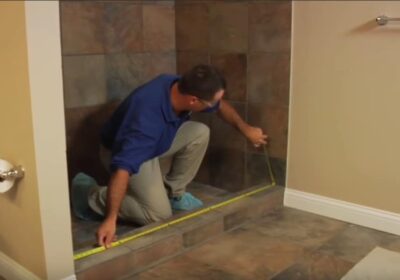▷5 Tips To Install New Bathroom Faucets In San Diego

5 Tips To Install New Bathroom Faucets In San Diego
Looking to upgrade your bathroom? Installing new faucets can make a big difference. But where to start? We’ve got you covered with five essential tips for a smooth installation process. From selecting the right faucet style to ensuring proper measurements, we’ll guide you through the do’s and don’ts. Say goodbye to leaks and hello to a stylish, functional bathroom with our expert advice. Ready to take your bathroom to the next level?
Choose the Right Faucet
Consider Faucet Style
When selecting a new bathroom faucet, consider the style that complements your bathroom decor. Popular styles include modern, traditional, and transitional designs. Ensure the faucet’s finish matches other fixtures for a cohesive look.
Match with Sink Type
Ensure the faucet you choose matches your sink type. Common sink types include undermount, vessel, pedestal, and wall-mounted sinks. Different faucets are designed to fit specific sink configurations for optimal functionality.
Check for Compatibility
Before purchasing a new faucet, check for compatibility with existing plumbing connections. Measure the faucet holes in your sink to ensure the new faucet will fit properly. Verify if any additional parts or adapters are required for installation.
Review User Reviews
Research user reviews and ratings of different faucet models to gauge their performance and durability. Look for feedback on ease of installation, water flow rate, and overall quality. Consider reputable brands with positive customer reviews for reliability.
Prepare for Installation
Gather Tools
To install new bathroom faucets successfully, gather tools like an adjustable wrench, screwdriver, and plumber’s tape. These tools are essential for a smooth installation process.
Gather Materials
In addition to tools, gather materials such as the new faucet set, replacement washers, and silicone caulk. Having these materials ready will ensure you can complete the installation without interruptions.
Shut Off Water Supply
Before starting the installation process, shut off the water supply to the bathroom. This step is crucial to prevent any water leaks or accidents during the faucet replacement.
Clear Work Area
Ensure to clear the work area around the sink before beginning the installation. Remove any items that may obstruct your access to the faucet and create a clutter-free workspace.
Remove the Old Faucet
Disconnect Water Lines
First, turn off the water supply to the faucet by closing the shut-off valves under the sink. Use an adjustable wrench to loosen the nuts connecting the water supply lines to the faucet.
Remove Mounting Nuts
Next, locate the mounting nuts securing the faucet in place. Use a basin wrench to loosen and remove these nuts. Ensure to keep track of any washers or gaskets that may come off with the nuts.
Lift Out Old Faucet
After removing the mounting nuts, carefully lift out the old faucet from the sink. Inspect the area for any debris or mineral buildup that may have accumulated over time.
Clean the Sink Area
Before installing the new faucet, thoroughly clean the sink area where the old faucet was removed. Scrub away any grime or residue using a mild cleaning solution and a sponge. Ensure the area is dry before proceeding with the installation.
Install the New Faucet
Position New Faucet
Place the new faucet into the mounting holes on the sink, ensuring it sits flush and straight.
When positioning, make sure the faucet handles are facing in the right direction for hot and cold water.
Secure Basin Nuts
Use a wrench to tighten the basin nuts securely underneath the sink to hold the faucet in place.
Ensure that the nuts are snug but not overly tightened to prevent damage to the faucet or sink.
- Pros: Prevents leaks and ensures stability.
- Cons: Over-tightening can cause damage.
Connect Water Lines
Connect the water supply lines to the corresponding hot and cold valves under the sink.
Use an adjustable wrench to tighten the connections, ensuring there are no leaks once water is turned on.
Tighten All Connections
Check all connections, including those at the faucet base and water lines, and tighten any loose fittings.
Make sure everything is secure to prevent leaks and ensure proper functioning of the new faucet.
Test and Finalize
Turn On Water Supply
After installing the new bathroom faucet, turn on the water supply to check for any leaks. Slowly open the shut-off valves to allow water to flow through the faucet. Listen and observe closely for any drips or leaks around the connections.
Check for Leaks
Inspect the connections and joints carefully to ensure there are no leaks. Wipe down the area with a dry cloth to check for any moisture. Address any leaks immediately by tightening the connections or replacing faulty parts.
Adjust Water Flow
Test the water flow by turning on both hot and cold handles. Ensure that the water flows smoothly without any disruptions. If there are issues with water pressure or flow, adjust the aerator or clean out any debris that may be causing obstructions.
Clean Up Work Area
Once you have confirmed that there are no leaks and the water flow is optimal, clean up the work area. Remove any tools, leftover parts, and debris from the installation process. Wipe down the sink and surrounding area to leave it clean and tidy.
FAQs
How Do I Choose The Right Bathroom Faucet?
To choose the right bathroom faucet, consider the style, finish, and functionality that best suits your needs. Look for durable materials like brass or stainless steel for longevity and easy maintenance.
What Should I Do To Prepare For Installing A New Bathroom Faucet?
Before installation, ensure you have all the necessary tools and equipment ready. Turn off the water supply to the faucet, clear out the area under the sink for easy access, and read the manufacturer’s instructions thoroughly.
How Can I Remove The Old Bathroom Faucet Safely?
To remove the old faucet safely, start by turning off the water supply. Use appropriate tools like a wrench to loosen and disconnect the connections. Clean any debris or mineral buildup around the fixture before proceeding with installation.
What Are The Steps Involved In Installing A New Bathroom Faucet?
Installing a new bathroom faucet involves connecting the water supply lines, securing the faucet in place, and checking for leaks. Follow the manufacturer’s instructions carefully to ensure proper installation and functionality.
How Do I Test And Finalize The Installation Of A New Bathroom Faucet?
After installing the new faucet, turn on the water supply to check for any leaks or drips. Test both hot and cold water settings to ensure proper functionality. Once everything is working correctly, clean up any excess sealant and enjoy your newly installed bathroom faucet.
Conclusion
You’ve now equipped yourself with the essential knowledge to install your new bathroom faucet successfully. Remember to choose the right faucet that complements your bathroom, prepare adequately, remove the old faucet carefully, install the new one diligently, and finally, test everything for a seamless finish. By following these steps, you can upgrade your bathroom effortlessly and enjoy a fresh look in no time.
Now it’s your turn to put these tips into action and transform your bathroom with a brand-new faucet. Don’t hesitate to seek professional help if needed, but with the guidance provided, you’re well on your way to completing this DIY project successfully. Good luck with your installation!
To benefit from our superior services, contact Pro Services General Contractors at (888) 564-3777 right away.
Contact Pro Services General Contractors today for our amazing remodeling services.
BELOW ARE SOME OF THE MANY HOME INTERIOR SERVICES THAT WE OFFER
-
Kitchen BacksplashKitchen Backsplash
-
Kitchen CabinetsKitchen Cabinets
-
Kitchen CountertopsKitchen Countertops
-
Kitchen FaucetsKitchen Faucets
-
Kitchen LightingKitchen Lighting
-
Kitchen SinksKitchen Sinks
-
Kitchen TileKitchen Tile
-
Bathroom AdditionBathroom Addition
-
Bathroom CabinetsBathroom Cabinets
-
Bathroom FaucetsBathroom Faucets
-
Bathroom SinksBathroom Sinks
-
Bathroom TileBathroom Tile
-
Bathroom VanitiesBathroom Vanities
-
Shower DoorsShower Doors
-
Shower SystemsShower Systems
-
Basement RemodelingBasement Remodeling
-
Crown Moulding / BaseboardsCrown Moulding / Baseboards
-
Dining Room RemodelingDining Room Remodeling
-
Home Office RemodelingHome Office Remodeling
-
Living Room RemodelingLiving Room Remodeling
-
ADUADU
-
Disability / Mobility ADUDisability / Mobility ADU
-
Finished BasementFinished Basement
-
First StoryFirst Story
-
Garage ConversionGarage Conversion
-
Granny FlatGranny Flat
-
Second StorySecond Story
-
Engineered StoneEngineered Stone
-
Engineered WoodEngineered Wood
-
Green FlooringGreen Flooring
-
Hardwood FlooringHardwood Flooring
-
Laminate FlooringLaminate Flooring
-
Natural Stone FlooringNatural Stone Flooring
-
Tile FlooringTile Flooring
-
Kitchen TileKitchen Tile
-
Bathroom TileBathroom Tile
-
Pool TilePool Tile
-
Exterior TileExterior Tile
Related Posts

▷DIY Backsplash Installation: A Step-by-Step Guide In San Diego
DIY Backsplash Installation: A Step-by-Step Guide In San Diego Installing a new kitchen backsplash can seem…

▷6 Steps to Choosing and Installing Your New Kitchen Countertops In San Diego
6 Steps to Choosing and Installing Your New Kitchen Countertops In San Diego Did you know…

▷Expert Advice for Installing a Stunning Tile Backsplash In San Diego
Expert Advice for Installing a Stunning Tile Backsplash In San Diego Looking to revamp your…

▷5 Benefits of Remodeling Your Living Room In San Diego
5 Benefits of Remodeling Your Living Room In San Diego Did you know that on average,…

▷5 Practical Tips for Combining Kitchen and Dining Rooms in Your Remodel In San Diego
5 Practical Tips for Combining Kitchen and Dining Rooms in Your Remodel In San Diego Embarking…

▷Tips to Measure and Install Shower Doors: A Step-by-Step DIY Guide In San Diego
Tips to Measure and Install Shower Doors: A Step-by-Step DIY Guide In San Diego Did you…

▷Ways to Remove and Install Bathroom Vanity Cabinets In San Diego
5 Reasons to Increase Your Home Value with Basement Remodeling In San Diego Did you…

▷5 Reasons to Increase Your Home Value with Basement Remodeling In San Diego
5 Reasons to Increase Your Home Value with Basement Remodeling In San Diego Did you know…
